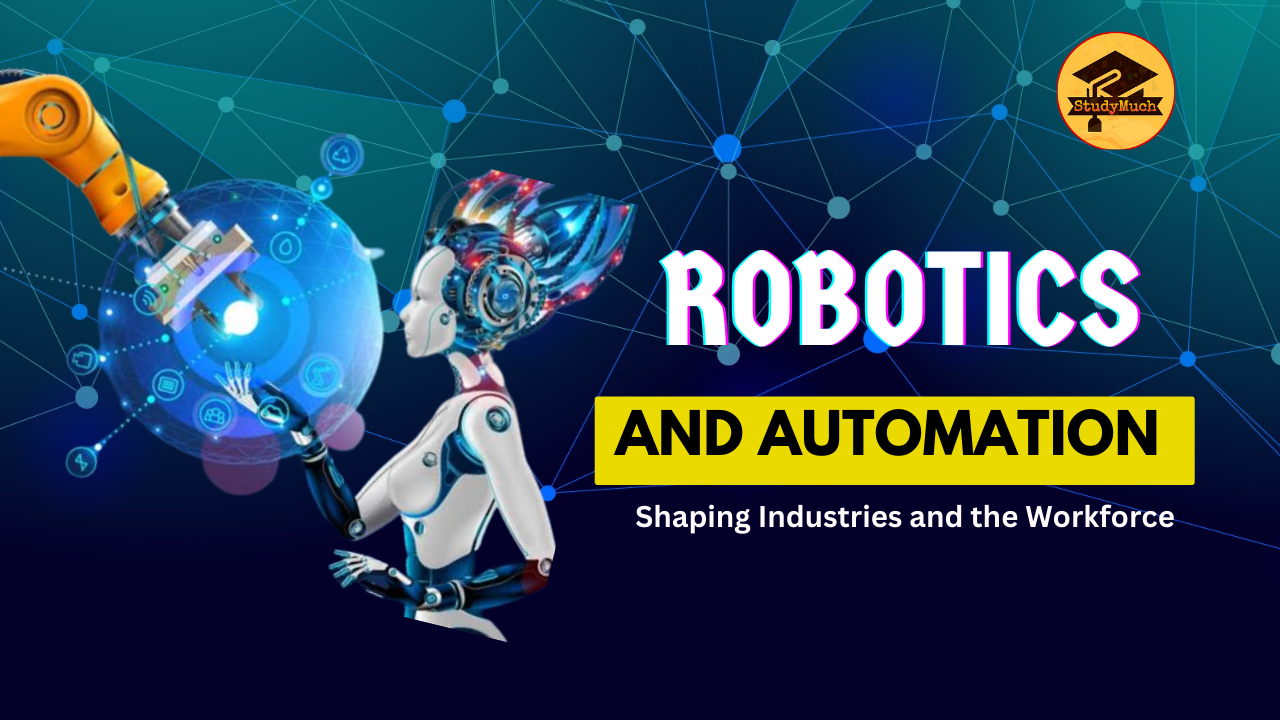Robotics and Automation

Robotics and Automation: Shaping Industries and the Workforce
The world of robotics and automation is rapidly evolving, transforming industries and reshaping the workforce. Over the past few decades, these technologies have made remarkable advances, leading to significant changes in the way businesses operate and the way people work. In this blog post, we will highlight the deep impact of robotics and automation on various industries and examine the evolving landscape of the workforce in the age of automation.
The Rise of Robotics and Automation
Robotics and automation have come a long way since their inception. Originally, robots were used primarily in manufacturing for repetitive and dangerous tasks. However, advances in artificial intelligence (AI), machine learning, and sensor technologies have expanded their applications far beyond the factory level.

Today, robots are found in a variety of fields, including healthcare, agriculture, logistics, and even in our homes. From robotic vacuum cleaners to autonomous vehicles, they have become an integral part of our daily lives. This widespread adoption is driven by several key factors:
-
Efficiency and Productivity: Robots can perform tasks with accuracy and speed, thereby increasing productivity and reducing error rates in various industries.
-
Cost savings: Automation can reduce labor costs in the long run, as robots do not require salaries, benefits, or vacations.
-
Safety: Robots can handle dangerous tasks, reducing the risk to human workers in hazardous environments.
-
Consistency: Automation ensures consistent quality and performance, which is important in industries like manufacturing and healthcare.
-
Scalability: Robots can be easily scaled to meet changing production demands, offering flexibility across different industries.
Industries Transformed by Robotics and Automation
Manufacturing:
The manufacturing industry was one of the first industries to adopt automation, with robots performing tasks such as welding, painting, and assembly. This has increased production capacity and also improved product quality.
Health care:
Robots are used for surgery, patient care, and medicine delivery. They aid in delicate processes, increasing accuracy and reducing the risk of human error.
Agriculture:
Autonomous tractors and drones are revolutionizing farming by automating tasks like planting, harvesting and monitoring crops. This improves crop yields and reduces labor-intensive work.
Logistics and supply chain:
Robots and automated systems are streamlining the movement of goods in warehouses and distribution centers, speeding up order fulfillment and reducing errors.
Construction:
Drones and robotic exoskeletons are being used to survey construction sites, assist workers in lifting heavy objects, and improve safety.
Service Sector:
Automation is also making its way into the service industry with self-checkout kiosks, chatbots, and AI-powered customer service agents.

Changing Workforce Landscape
As robotics and automation technologies advance, the workforce undergoes a transformation, which presents both opportunities and challenges:
-
New job opportunities: Automation creates jobs in areas like robot programming, maintenance and data analysis. Workers with skills in robotics and AI are in high demand.
-
Re-skilling and upgrading: To remain relevant in the job market, many workers will need to acquire new skills. Lifelong learning and adaptability are becoming increasingly important.
-
Human-Robot Collaboration: In the future of work, humans will work alongside robots. Workers must learn to collaborate effectively with machines to maximize productivity.
-
Job displacement: Automation may lead to job displacement in some industries. Governments and businesses should provide assistance to affected workers through retraining programs and social safety nets.
-
Creativity and problem solving: As routine tasks are automated, the focus shifts to tasks that require creativity, critical thinking, and problem-solving skills that are uniquely human.
Conclusion
Robotics and Automation have already revolutionized many industries, and their influence will only continue to grow. While they bring unprecedented efficiency and safety to the workplace, they also pose challenges for the workforce. Embracing this change with a commitment to reskilling and upskilling will be critical to ensuring that the workforce remains competitive and adaptable in the age of automation. The future holds great potential for collaboration between humans and machines, driving innovation and improving the quality of life around the world.
Learn More;
-
Learn What is AI (Artificial Intelligence).
-
Learn the Features of AI.
-
Learn all the Generation of Computer.
-
Learn the Future of Wearable Tech.
-
Learn Blockchain Beyond Cryptocurrencies.



0 Comments